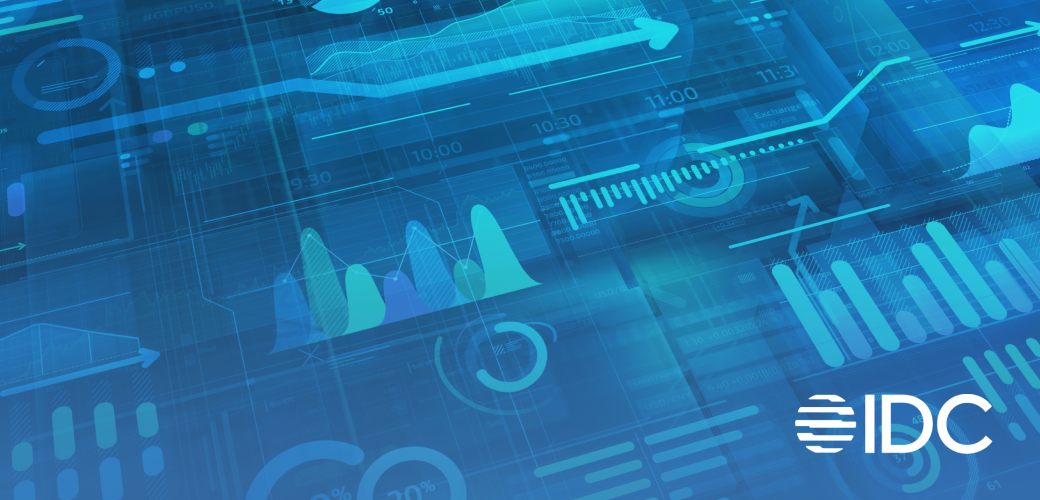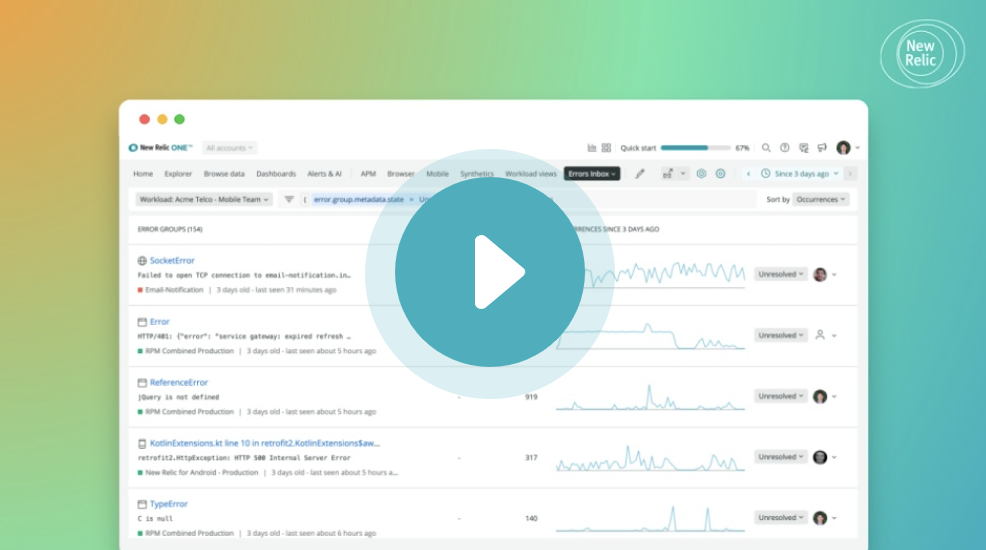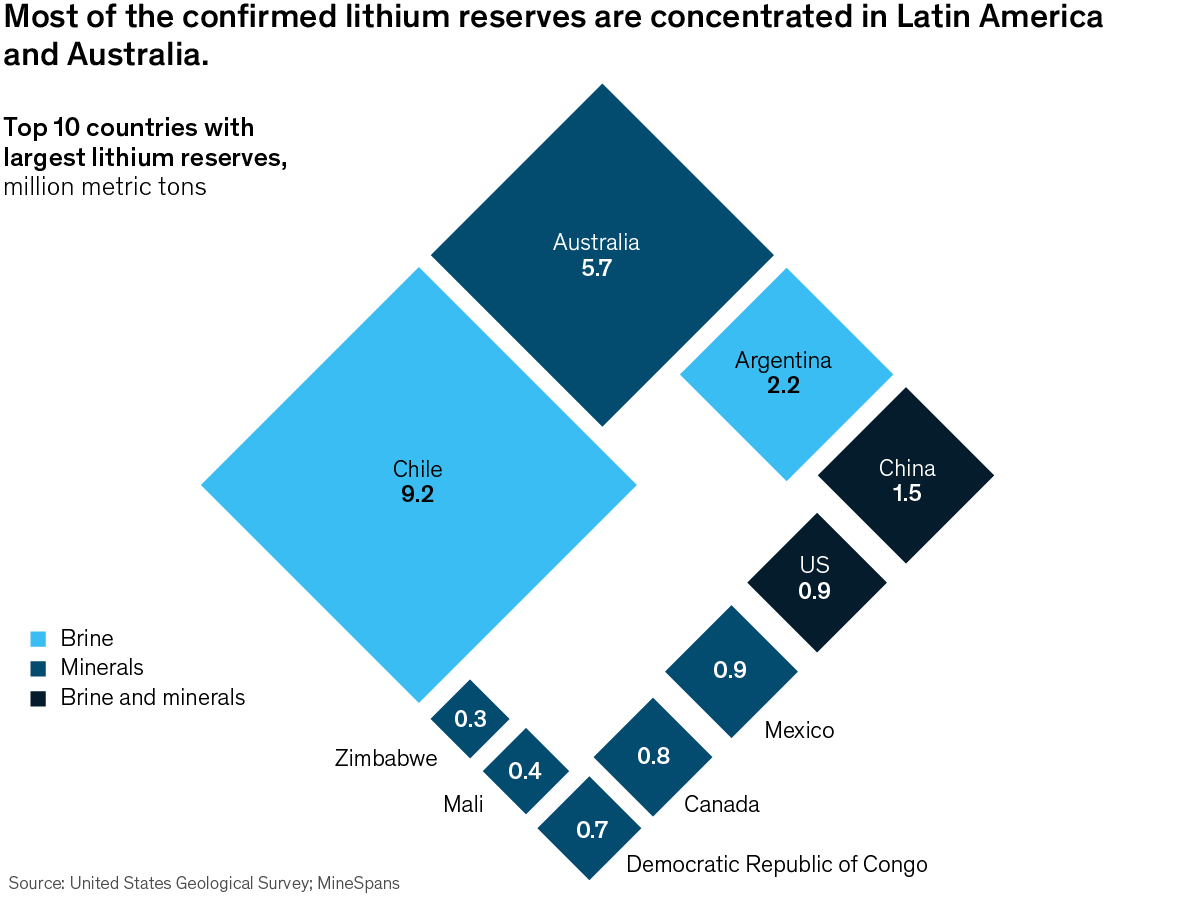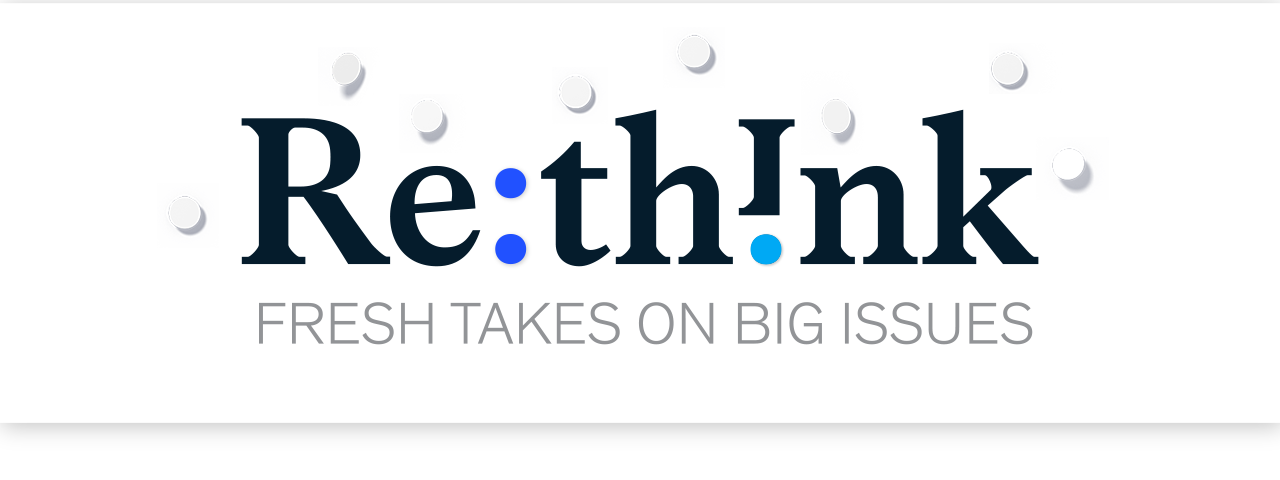Archives
- By thread 5358
-
By date
- June 2021 10
- July 2021 6
- August 2021 20
- September 2021 21
- October 2021 48
- November 2021 40
- December 2021 23
- January 2022 46
- February 2022 80
- March 2022 109
- April 2022 100
- May 2022 97
- June 2022 105
- July 2022 82
- August 2022 95
- September 2022 103
- October 2022 117
- November 2022 115
- December 2022 102
- January 2023 88
- February 2023 90
- March 2023 116
- April 2023 97
- May 2023 159
- June 2023 145
- July 2023 120
- August 2023 90
- September 2023 102
- October 2023 106
- November 2023 100
- December 2023 74
- January 2024 75
- February 2024 75
- March 2024 78
- April 2024 74
- May 2024 108
- June 2024 98
- July 2024 116
- August 2024 134
- September 2024 130
- October 2024 141
- November 2024 171
- December 2024 115
- January 2025 216
- February 2025 140
- March 2025 220
- April 2025 233
- May 2025 239
- June 2025 303
- July 2025 171
-
Addressing employee burnout: Are you solving the right problem?
the Daily read
Battle burnout .
Share this email 



AN ARTICLE A DAY, PICKED BY OUR EDITORS 
Did you know that nearly one in four employees globally report experiencing symptoms of burnout? While unprecedented resources are being invested in wellness programs, findings from a recent McKinsey Health Institute global survey suggest employers are underestimating the critical role of the workplace in reducing burnout. Across 15 countries, toxic workplace behavior was the biggest predictor of burnout symptoms and intent to leave. So what can employers do? A new article outlines actions to address the issue, as part of a McKinsey Health Institute flagship initiative to convene leading employers globally around the urgent priority of mental health. You don’t want to miss it. — Emily Adeyanju, digital editor, New York 
Addressing employee burnout: Are you solving the right problem? Employers have invested unprecedented resources in employee mental health and well-being. With burnout at all-time highs, leaders wonder if they can make a difference. Our research suggests they can. Battle burnout 

Quote of the Day “To me, fundamentally, inclusive growth is about creating agency within people’s lives so that they have the ability to make the best decisions for themselves and their families” —Lata Reddy, senior vice president of Inclusive Solutions at Prudential Financial, on sustainable and inclusive growth in a new episode of the Future of America podcast 
Chart of the Day 
See today’s chart 
Also New 

What will it take to boost Latino economic power? McKinsey research reveals interventions that can help boost Latino participation in the US economy and strengthen the nation’s economic performance overall. Listen and support 
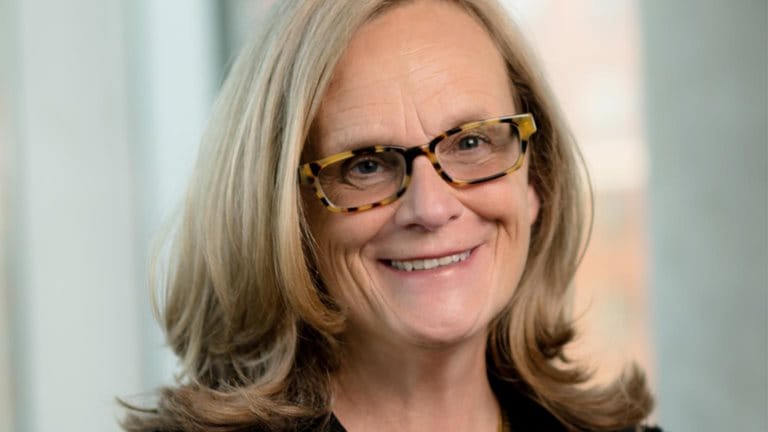

Author Talks: Flex your ‘no muscle’ Nonpromotable work profoundly affects women’s careers and lives. In her new book, Lise Vesterlund explains why women so often agree to it—and how they can say no. Set boundaries 


How inflation and the conflict in Ukraine are impacting European consumers The latest Consumer Pulse survey shows that, across Europe, people have changed their habits and adopted new behaviors in response to new stressors. Understand regional views 


Follow our thinking 



Share these insights Did you enjoy this newsletter? Forward it to colleagues and friends so they can subscribe too.
Was this issue forwarded to you? Sign up for it and sample our 40+ other free email subscriptions here.This email contains information about McKinsey’s research, insights, services, or events. By opening our emails or clicking on links, you agree to our use of cookies and web tracking technology. For more information on how we use and protect your information, please review our privacy policy. You received this email because you subscribed to the Daily Read newsletter. Manage subscriptions | Unsubscribe Copyright © 2022 | McKinsey & Company, 3 World Trade Center, 175 Greenwich Street, New York, NY 10007
by "McKinsey Daily Read" <publishing@email.mckinsey.com> - 05:14 - 1 Jun 2022 -
Here's the UC Productivity Report you requested.
Digium | A Sangoma Company
Thanks for your interest in the UC Productivity Analysis Report!



Download the report >>
In this report from Eastern Management Group, you will learn how UC:- Impacts productivity and by how much.
- Drives increased efficiency and cost savings.
- Promotes greater collaboration and saves time.

Sangoma Technologies
100 Renfrew Drive, Suite 100, Markham, ON L3R 9R6, Canada
800 388 2475 Toll Free in North America
+1 905 474 1990 International Direct
by "Sangoma Technologies" <webannounce@sangoma.com> - 01:38 - 1 Jun 2022 -
Anxiety can be good for you—really
McKinsey&Company
Don’t fear the fear .

Everybody hurts In the news • Fearful. Is fear something to be completely avoided? Or is it perhaps a useful tool in this game called life? Definitely the former, says one professor of psychology, who compares not listening to our fears with not listening to pain: you can risk getting injured if you don’t feel the sensation. It’s not about whether your fears are rational. The big question those working through fear should ask themselves is if it’s proportional to the real-life threat. In other words: Does this particular fear matter in your daily life? [NYT] • Fearless. Worldwide anxiety and depression increased by 25% because of the COVID-19 pandemic, WHO reported in March. At work, anxiety and depression can manifest as not just stress but fear, multiplied by pandemic-induced situations over which we have little to no control. Ever-present anxiety can lead to burnout, depression disorders, and panic attacks. But understanding what’s causing your fear can help you come up with potential solutions and discern what influence you may have to effect change. [FT] 
“How does anxiety help you? To see possibilities. Anxiety is that feeling that there is a possibility of possibilities.” 
On McKinsey.com • Good for you. Anxiety isn’t a malfunction, says Tracy Dennis-Tiwary, professor of psychology and neuroscience and founder of Wise Therapeutics. Nor is it an automatic signal that something is terribly wrong. While anxiety has been a ubiquitous experience during the COVID-19 pandemic, it’s still misunderstood. She believes it’s in need of rebranding as a helpful, potentially transformative function of being human that allows us to create, be creative, and find meaning and purpose. • Though it can feel bad. In McKinsey’s latest edition of Author Talks, Dennis-Tiwary discusses her new book Future Tense: Why Anxiety Is Good for You (Even Though It Feels Bad) and how we can reframe our relationship with anxiety. Mental-health professionals, she believes, have unintentionally communicated harmful information about anxiety. Dennis-Tiwary proposes a different, healthy mindset about anxiety—including treating it as helpful “information, not a failure of happiness.” — Edited by Justine Jablonska Make anxiety your ally 
Was this forwarded to you? Sign up here. Or send us feedback — we’d love to hear from you. 

Follow our thinking 


This email contains information about McKinsey’s research, insights, services, or events. By opening our emails or clicking on links, you agree to our use of cookies and web tracking technology. For more information on how we use and protect your information, please review our privacy policy. You received this email because you subscribed to the On Point newsletter. Manage subscriptions | Unsubscribe Copyright © 2022 | McKinsey & Company, 3 World Trade Center, 175 Greenwich Street, New York, NY 10007
by "McKinsey On Point" <publishing@email.mckinsey.com> - 12:16 - 1 Jun 2022 -
Saying no could help advance your career
the Daily read
Set boundaries .
Share this email 



AN ARTICLE A DAY, PICKED BY OUR EDITORS 
When was the last time you were asked to take on nonpromotable work? These are tasks, often done behind the scenes, that help the organization but don’t help advance your career. Unsurprisingly, women take on the bulk of nonpromotable tasks because there’s an expectation that they will do the work—which makes managers more likely to make these requests. This cycle is an organizational problem that not only hurts women’s careers but is also detrimental to the organization’s productivity and profitability, argues Lise Vesterlund, Pittsburgh Experimental Economics Laboratory Director, in a new Author Talks interview. Be sure to check it out and see how saying “no” can help advance gender equality. — Katherine Tam, digital editor, New York 
Author Talks: Flex your ‘no muscle’ Nonpromotable work profoundly affects women’s careers and lives. In her new book, Lise Vesterlund explains why women so often agree to it—and how they can say no. Set boundaries 

Quote of the Day —Lucy Pérez, McKinsey senior partner, on boosting Latino economic power in a new episode of The McKinsey Podcast 
Chart of the Day 
See today’s chart 
Also New 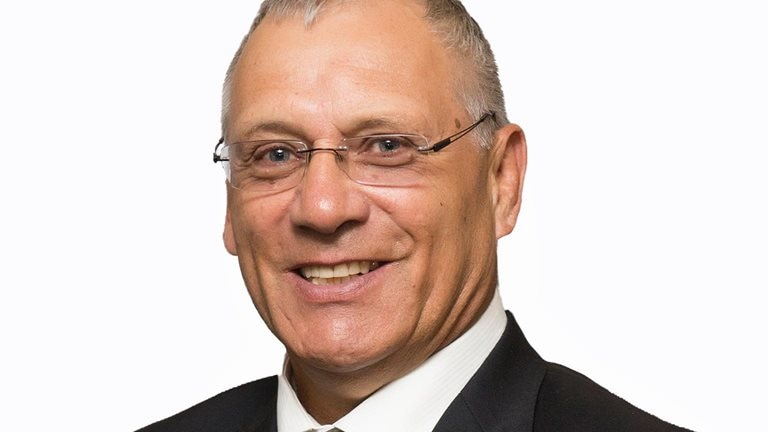

Outgoing New Zealand Rugby President Bill Osborne on strategy and leadership The outgoing president of New Zealand Rugby discusses how his Maori background and time playing for the All Blacks have shaped his business career. Learn from a leader 


Employers look to expand health benefits while managing medical costs A survey of US employers reveals their strategies and approaches for designing appealing health benefits packages and managing costs. Discover employer strategies 


Bias Busters: When the crowd isn’t necessarily wise Leaders need to recognize herd mentality when it happens—and explore the contrarian view to help break the spell. Make bold moves 


Follow our thinking 



Share these insights Did you enjoy this newsletter? Forward it to colleagues and friends so they can subscribe too.
Was this issue forwarded to you? Sign up for it and sample our 40+ other free email subscriptions here.This email contains information about McKinsey’s research, insights, services, or events. By opening our emails or clicking on links, you agree to our use of cookies and web tracking technology. For more information on how we use and protect your information, please review our privacy policy. You received this email because you subscribed to the Daily Read newsletter. Manage subscriptions | Unsubscribe Copyright © 2022 | McKinsey & Company, 3 World Trade Center, 175 Greenwich Street, New York, NY 10007
by "McKinsey Daily Read" <publishing@email.mckinsey.com> - 06:16 - 31 May 2022 -
Intel Vision 2022 On-Demand Is Now Available!
Intel Vision 2022 On-Demand Is Now Available!

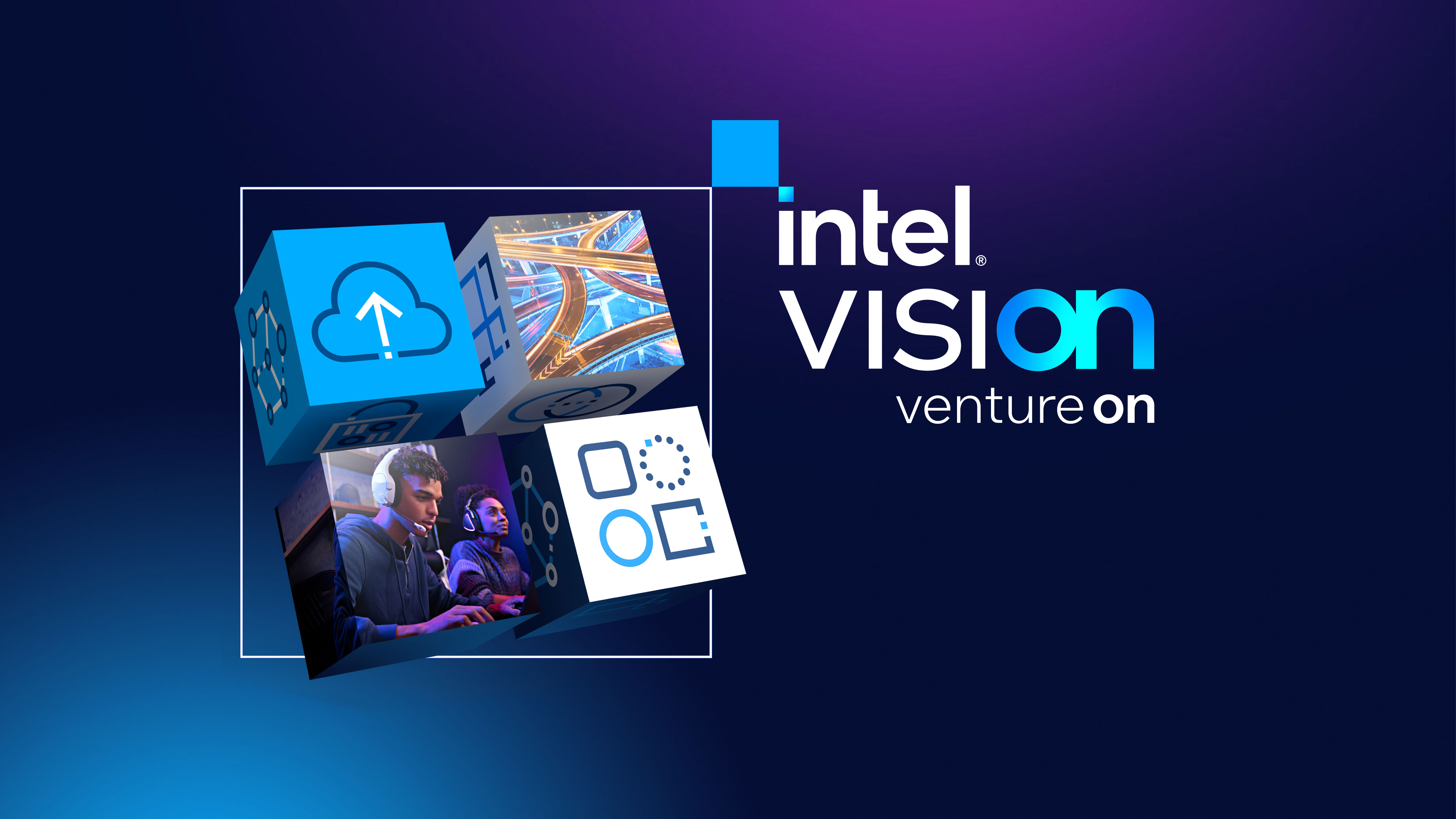


The Intel Vision 2022 Digital Event (On Demand) is here!
Intel Vision 2022 is the latest event in the Intel ON series - geared towards meeting business and technology leaders’ greatest challenges and opportunities to unlock new levels of knowledge, learnings, and innovation - to power the next phase of your business.
Intel Vision 2022 on-demand and content catalog is now live. Unlock amazing panel discussions, lectures, insights, and innovations from Intel leaders, industry partners and luminaries.
Go to Intel Vision 2022, tune in to hear more!
Thank you,
The Intel® Vision Team





This was sent to info@learn.odoo.com because you are subscribed to Events & Tradeshows. To view and manage your marketing-related email preferences with Intel, please click here.
© 2022 Intel Corporation
Intel Corporation, 2200 Mission College Blvd., M/S RNB4-145, Santa Clara, CA 95054 USA. www.intel.comPrivacy | Cookies | *Trademarks | Unsubscribe | Manage Preferences
by "Intel Corporation" <intel@plan.intel.com> - 02:00 - 31 May 2022 -
What the best CEOs do to lead a successful digital transformation
McKinsey&Company
Avoid pilot project purgatory .

Change for the better In the news • Getting ahead in the cloud. Executives say that the constant pressure to operate faster and to expand their businesses is leading them to spend more of their budgets on cloud computing. Advanced software applications such as AI, Internet of Things, and business intelligence—which, for many companies, became necessary during the pandemic—consume large amounts of processing power, nudging up cloud expenses. Globally, businesses are projected to spend nearly $500 billion on cloud capabilities in 2022, a 20% hike over last year. [WSJ] • Beyond tech trends. With the onset of the COVID-19 crisis came a flood of digitization efforts across industries. But how do you get from the “valley of tears” (a time after the trendy new tech is adopted but actual business value is unclear) to the “plateau of productivity” (where there’s meaningful change)? One expert says to view digitization as a change in business model rather than in technology. Using a tool called the business model canvas can help leaders break down the different parts of a business and establish a baseline against which to measure change. [HBR] 
“The point of digital transformation isn’t to become digital. It’s to generate value for the business.” 
On McKinsey.com • A marathon, not a sprint. To undertake a successful digital transformation, companies need to define what “good” really looks like, says McKinsey’s Kate Smaje. “There isn’t a point in time when digital transformation is done,” suggests Smaje. “It’s more about, ‘How am I building a real muscle for the organization to continue getting better?’” One common mistake that can put success out of reach: every leader follows their own digital road map instead of having one clear set of priorities for the entire organization, adds senior partner Rodney Zemmel. • The metrics that matter. How can a business measure what’s working in a digital transformation? Clearly defined metrics are a start, and it’s best to look beyond operational and financial objectives (although those are, of course, important). For instance, companies can determine if decisions are being made faster, capabilities are improving, and the culture is being transformed. Listen to this episode of The McKinsey Podcast to learn three guidelines for getting the most value from digital initiatives. — Edited by Sarah Thuerk Start your digital journey 
Was this forwarded to you? Sign up here. Or send us feedback — we’d love to hear from you. 

Follow our thinking 


This email contains information about McKinsey’s research, insights, services, or events. By opening our emails or clicking on links, you agree to our use of cookies and web tracking technology. For more information on how we use and protect your information, please review our privacy policy. You received this email because you subscribed to the On Point newsletter. Manage subscriptions | Unsubscribe Copyright © 2022 | McKinsey & Company, 3 World Trade Center, 175 Greenwich Street, New York, NY 10007
by "McKinsey On Point" <publishing@email.mckinsey.com> - 12:10 - 31 May 2022 -
A leader’s guide to better brainstorming
Leading Off
Bursting with questions .
Share this email 



ESSENTIALS FOR LEADERS AND THOSE THEY LEAD 
The concept of brainstorming has been around for decades. Originally introduced in the marketing world more than 80 years ago, it has since become a universal collaborative process for businesses everywhere. At its core, brainstorming is a useful way for teams to participate in group idea generation, but the approaches to it have diverged—especially in the wake of new ways of working, including hybrid models. This week, let’s explore ways to improve your brainstorming sessions and the likelihood that they will generate innovative, valuable ideas. AN IDEA 
To boost your brainstorming, ask better questions Does your team dread brainstorming sessions or find itself hitting creativity roadblocks? The good news is that there are ways to break out of the rut of traditional brainstorming techniques and renew energy, productivity, and even excitement about the process. To start, make sure that you’re asking the right questions—ones that encourage new perspectives on the problem at hand while staying within the parameters of suitable exploration. Try conducting “question bursts,” in which the group brainstorms more questions rather than answers. Coming up with as many open, descriptive questions as possible prevents groupthink, challenges assumptions, and illuminates uncharted paths to potential solutions. Research also shows that creative juices flow better when the left and right hemispheres of the brain collaborate, mixing logic with imagination. To spark communication between the two brain hemispheres, all you need is 30 seconds of bilateral eye movement. This trick can also help with virtual brainstorming—remote meetings can dampen creativity if participants are too focused on their screens, which limits their visual scope and, in turn, their cognitive scope. So let your eyes roam and see what new ideas come to light. 
A BIG NUMBER 16% That’s the increase in the number of ideas generated by groups encouraged to criticize one another’s ideas during brainstorming sessions compared with teams that were told to withhold criticism. Furthermore, the ideas that the former group generated were deemed 17 percent more creative by independent observers. Here’s the rub: that only holds true in cooperative contexts. In a competitive context, groups whose participants criticize one another’s ideas generate fewer and less creative ones. Most brainstorming sessions take place in environments with a mixture of these characteristics, yet if facilitators can create a perception of cooperation and mutual interest or benefit during a brainstorming exercise, criticism can be a boon to creativity. 

A QUOTE “Using a structured approach to brainstorming removes some of the risks that can thwart honest discussion.” So say McKinsey experts in one of the latest Bias Busters installments. In brainstorming sessions, people may hold back for a variety of reasons, such as feeling pressured to conform to a group consensus, wanting to avoid conflict or judgment of their ideas, or trying to maintain a perception of authority. People with social anxiety or those with more introverted personalities may also be less inclined to participate actively, finding it difficult to get a word in or needing more time to react to others’ contributions. To create a more inclusive and productive brainstorm, leaders can use anonymous brainstorming and silent voting, or even silent meetings, to capture ideas more comprehensively and fairly. The extra time and effort devoted to overcoming these risk aversions may lead to your team’s best ideas. 
A SPOTLIGHT INTERVIEW 
What’s a good way to think about brainstorming in your company? “If you had an organization and there was an oil well on the property, you’d do everything you could to extract that natural resource and deploy it for your growth,” says Josh Linkner, founder and CEO of five tech companies and author of Big Little Breakthroughs: How Small, Everyday Innovations Drive Oversized Results. “We have the proverbial oil well inside all of our people, and what a shame if we don’t let them use it.” In an Author Talks interview with McKinsey, Linkner discusses how leaders can “democratize creativity and innovation” by developing systemized ways to unlock the dormant idea reservoirs within their organizations. Thinking of new ideas as sparks instead of fully baked or endorsed ideas is one way to reinforce the iterative approach to idea generation during brainstorming. For team members held back by fear—of expressing a bad idea, being judged, or facing retribution—“rolestorming,” or brainstorming in character, can also be a liberating approach. 
CREATIVITY THROUGH CONSTRAINTS 
Sometimes constraints are exactly what you need to allow room for your team’s creativity to shine. A great brainstorm requires direction, facts, and a variety of perspectives. Brainstorming sessions that are too unstructured can lead to time wasted on exploring irrelevant ideas or ones based on incorrect assumptions, while constraints in the form of proper framing and a fact base can help focus participants’ attention on what matters. Artificial but tailored constraints can also unlock fresh ideas by challenging your team to overcome new complications. As an emeritus professor at Duke University’s Fuqua School of Business says, the most effective brainstorming happens when people “think inside the box—the right-sided box.” Lead by brainstorming better. — Edited by Dana Sand, an editorial production manager in McKinsey’s Cleveland office 

Follow our thinking 



Share these insights Did you enjoy this newsletter? Forward it to colleagues and friends so they can subscribe too.
Was this issue forwarded to you? Sign up for it and sample our 40+ other free email subscriptions here.This email contains information about McKinsey’s research, insights, services, or events. By opening our emails or clicking on links, you agree to our use of cookies and web tracking technology. For more information on how we use and protect your information, please review our privacy policy. You received this email because you subscribed to the Leading Off newsletter. Manage subscriptions | Unsubscribe Copyright © 2022 | McKinsey & Company, 3 World Trade Center, 175 Greenwich Street, New York, NY 10007
by "McKinsey Leading Off" <publishing@email.mckinsey.com> - 01:12 - 30 May 2022 -
The week in charts
the Daily read
Talent retention, healthier economies, and more .
Share this email 



ALL THE WEEK’S DATA THAT'S FIT TO VISUALIZE 
Our Charting the path to the next normal series offers a daily chart that helps explain a changing world—during the pandemic and beyond. In case you missed them, this week’s graphics explored how companies can retain design talent, global disease burdens, the largest lithium reserves, the popularity of grocery delivery, and working moms in the US. FEATURED CHART The art of talent retention 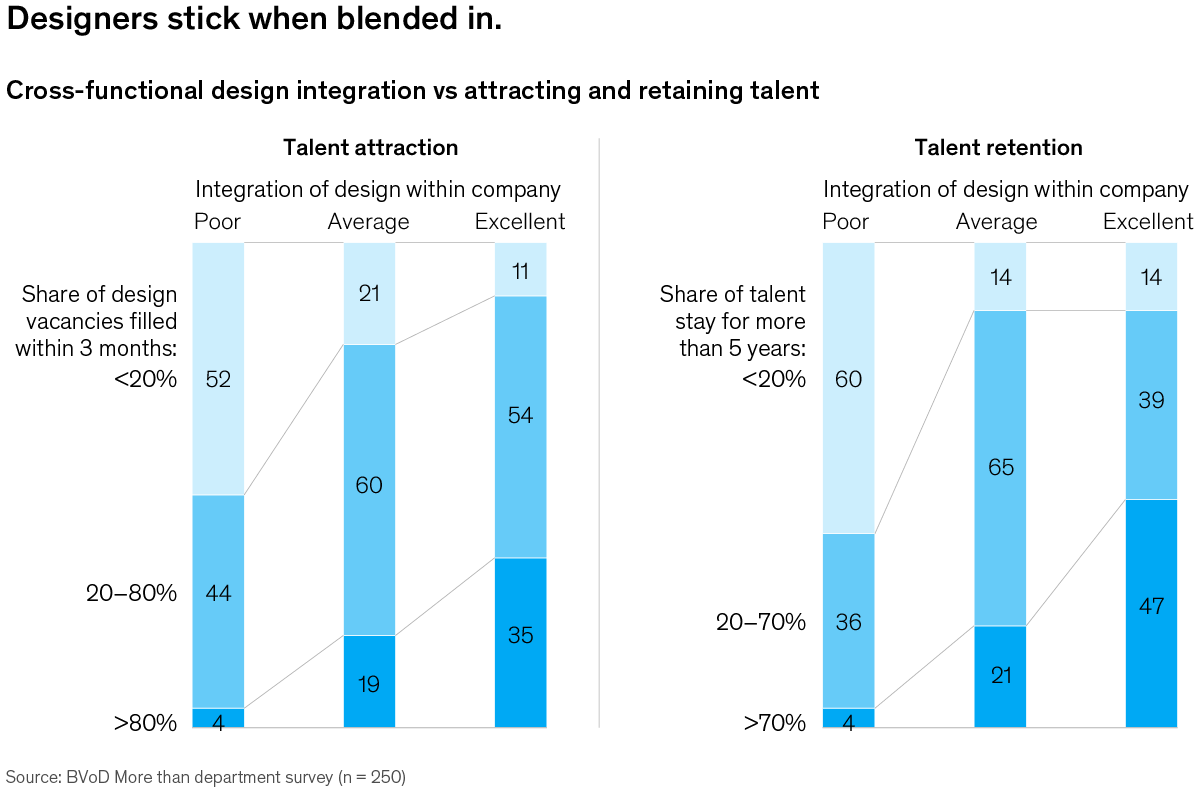
See more 



This week’s other select charts Healthy people could lead to healthier economies These countries are driving lithium production A taste for home delivery Working moms bear the care burden 

Follow our thinking 



Share these insights Did you enjoy this newsletter? Forward it to colleagues and friends so they can subscribe too.
Was this issue forwarded to you? Sign up for it and sample our 40+ other free email subscriptions here.This email contains information about McKinsey’s research, insights, services, or events. By opening our emails or clicking on links, you agree to our use of cookies and web tracking technology. For more information on how we use and protect your information, please review our privacy policy. You received this email because you subscribed to The Week in Charts newsletter. Manage subscriptions | Unsubscribe Copyright © 2022 | McKinsey & Company, 3 World Trade Center, 175 Greenwich Street, New York, NY 10007
by "McKinsey Week in Charts" <publishing@email.mckinsey.com> - 03:58 - 28 May 2022 -
Conscious capitalism with Fortune’s Alan Murray
Readers & Leaders
Embrace stakeholder capitalism THIS MONTH'S PAGE-TURNERS ON BUSINESS AND BEYOND
In conversations with corporate executives, Fortune Media CEO Alan Murray has noticed a common theme: business leaders feel that companies could be doing more to positively impact society. In this edition of Readers & Leaders, catch a discussion with Murray about stakeholder capitalism and why companies can’t afford to misalign with consumer values. Don’t miss highlights from interviews on reframing your anxiety, saying “no” to nonpromotable work, and more, plus this month’s bestselling business books, prepared exclusively for McKinsey by NPD BookScan. Itching for more good reads? Check out McKinsey on Books for the latest.
AUTHOR TALKS
Once a choice, soon a necessity, social consciousness in business is here to stay, says Alan Murray. Companies are increasingly taking a side, be it climate justice, transgender rights, or other divisive matters. In a recent edition of Author Talks, the Fortune Media CEO and lifelong journalist shares how business leaders are pairing profits and social purpose, plus more from his new book, Tomorrow’s Capitalist: My Search for the Soul of Business.
“What’s happened over the course of the last decade, in part because of the failure of governments, is that companies have said, ‘We’ve got to pay attention to these long-term effects if we want to be around.’ They’ve also been pushed to do that by their employees. That’s probably something we should talk more about—it’s a big part of the dynamic—but a number of things have come together to force companies to say, ‘We need to pay more attention to the positive impact on society because if we don’t, we may have an existential problem down the road.’” Watch the full interview.IT BEARS REPEATING
“What I have found in the younger generations is a grit and an idealism that I think is rare. I associate them a lot with the World War II generation, which was the most effective we’ve had in recent times. There are a lot of people who are young now who remind me of World War II veterans, especially those people coming back from Afghanistan and Iraq, in the US military. They learned hard discipline.”
–David Gergen, former editor of US News & World Report, four-time White House adviser, and author of Hearts Touched With Fire: How Great Leaders are Made, in a recent edition of Author Talks.
IN CASE YOU MISSED IT
Seth Stephens-Davidowitz warns us against trusting our gut: “There’s more data out there than has ever existed, and sometimes the data really does go against what you think. This approach of winging it in life isn’t the best one.” Watch the full interview.
Dr. Tracy Dennis-Tiwary shares how to turn anxiety from an adversary into an ally: “We mental health professionals have unintentionally given people damaging information about anxiety. We’ve essentially spread two fallacies about anxiety. First, that it’s always a debilitating experience.” Watch the full interview.
Lise Vesterlund says no to preparing someone else’s deck and other nonpromotable work: “Managers are 50 percent more likely to ask women to do nonpromotable work, and when women are asked, they are 50 percent more likely to say yes to these requests to do nonpromotable work.” Watch the full interview.BUSINESS BESTSELLERS TOP
8
Whether you’re going away for the weekend or enjoying a late-spring staycation, take advantage of extra downtime with the top business bestsellers in eight categories, prepared exclusively for McKinsey by NPD BookScan. Explore the full lists on McKinsey on Books.
BUSINESS OVERALL
Atomic Habits: An Easy & Proven Way to Build Good Habits & Break Bad Ones by James Clear (Penguin Group USA)
BUSINESS HARDCOVER
Atomic Habits: An Easy & Proven Way to Build Good Habits & Break Bad Ones by James Clear (Penguin Group USA)
DECISION MAKING
Blink: The Power of Thinking Without Thinking by Malcolm Gladwell (Hachette Book Group)
ECONOMICS
Basic Economics: A Common Sense Guide to the Economy by Thomas Sowell (Hachette Book Group)
ORGANIZATIONAL BEHAVIOR
Atomic Habits: An Easy & Proven Way to Build Good Habits & Break Bad Ones by James Clear (Penguin Group USA)
WORKPLACE CULTURE
Who Moved My Cheese?: An Amazing Way to Deal with Change in Your Work and in Your Life by Spencer Johnson (Penguin Group USA)
DIVERSITY & INCLUSION
Caste (Oprah’s Book Club): The Origins of Our Discontents by Isabel Wilkerson (Random House)
SUSTAINABILITY
Net Positive: How Courageous Companies Thrive by Giving More Than They Take by Paul Polman and Andrew Winston (Harvard Business Review Press)
BOOKMARK THIS
The McKinsey Download Hub
Download McKinsey’s signature reports and special collections on the management issues that matter, from leading through the COVID-19 crisis to managing risk and digitizing operations.
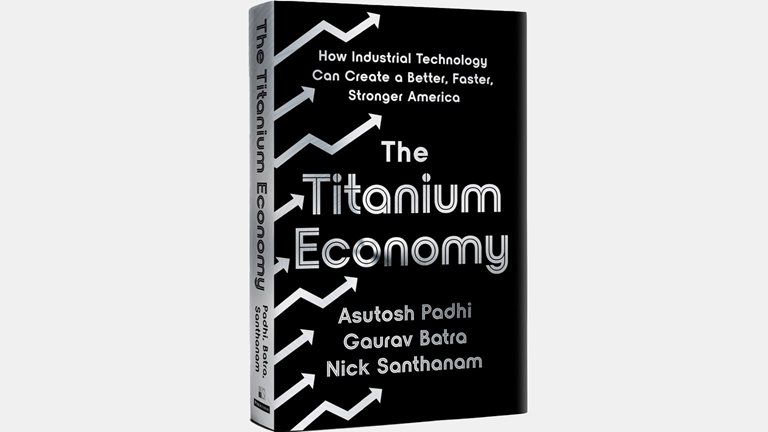
The Titanium Economy
McKinsey’s forthcoming #TitaniumEconomyBook explores industrial tech and reveals this underappreciated and undervalued sector for what it really is: a reliable source of high-paying domestic jobs and soaring stock prices.

The graduate’s guide to the world of work
A collection of recent insights and interviews to help you hit the ground running at your new job or internship during a period of continuing—and profound—change.
If you’d like to propose a book or author for #McKAuthorTalks, please email us at Author_Talks@Mckinsey.com. Due to the high volume of requests, we will respond only to those being considered.
—Edited by Molly Liebergall, a digital editor in McKinsey’s New York office
Share these insights
Did you enjoy this newsletter? Forward it to colleagues and friends so they can subscribe too.
Was this issue forwarded to you? Sign up for it and sample our 40+ other free email subscriptions here.
This email contains information about McKinsey's research, insights, services, or events. By opening our emails or clicking on links, you agree to our use of cookies and web tracking technology. For more information on how we use and protect your information, please review our privacy policy.
You received this email because you subscribed to the Readers & Leaders newsletter.
Copyright © 2022 | McKinsey & Company, 3 World Trade Center, 175 Greenwich Street, New York, NY 10007
by "McKinsey Readers & Leaders" <publishing@email.mckinsey.com> - 11:53 - 28 May 2022 -
How inflation and the conflict in Ukraine are impacting European consumers
the Daily read
See the trends .
Share this email 



AN ARTICLE A DAY, PICKED BY OUR EDITORS 
Rising prices and the war in Ukraine are top of mind for Europeans who are slowly emerging from the pandemic. Consumer pessimism is at an all-time high, and people are changing the way they spend amid economic uncertainties. Nine charts from McKinsey’s latest European Consumer Pulse Survey dig deeper into the changing habits and new behaviors of consumers in France, Germany, Italy, Spain, and the United Kingdom. Dive into the data to see how Europeans are navigating change. — Joyce Yoo, digital editor, New York 
How inflation and the conflict in Ukraine are impacting European consumers The latest Consumer Pulse survey shows that, across Europe, people have changed their habits and adopted new behaviors in response to new stressors. See the trends 

Quote of the Day “In transformation, every organization looks like a start-up. … The conditions in large enterprise look very much like the conditions have always looked in a young company trying to create a segment or a category or launch a new product.” —Deidre Paknad, co-founder and CEO of Workboard, in a recent episode of the McKinsey on Start-ups podcast 
Chart of the Day 
See today’s chart 
Also New 

For many Americans, economic opportunity seems increasingly out of reach Low unemployment doesn’t seem to dispel the gloom about inflation, the McKinsey American Opportunity Survey shows. Understand national sentiment 


Leading from the heart: How Freshworks’ CEO built a global tech unicorn Girish Mathrubootham, CEO of the India-born, US-headquartered software-as-a-service start-up believes that this is the decade for India as a product nation. Keep up 


The McKinsey Crossword: Degree Holders | No. 77 39-Down: Skill whose development is critical to long-term career success Play now 


Follow our thinking 



Share these insights Did you enjoy this newsletter? Forward it to colleagues and friends so they can subscribe too.
Was this issue forwarded to you? Sign up for it and sample our 40+ other free email subscriptions here.This email contains information about McKinsey’s research, insights, services, or events. By opening our emails or clicking on links, you agree to our use of cookies and web tracking technology. For more information on how we use and protect your information, please review our privacy policy. You received this email because you subscribed to the Daily Read newsletter. Manage subscriptions | Unsubscribe Copyright © 2022 | McKinsey & Company, 3 World Trade Center, 175 Greenwich Street, New York, NY 10007
by "McKinsey Daily Read" <publishing@email.mckinsey.com> - 06:25 - 27 May 2022 -
🎙 Webinar:Improving Life-Work Balance for Your Remote Workforce
🎙 Webinar:Improving Life-Work Balance for Your Remote Workforce
Register today for our online discussion on improve the life-work balance of your remote workforce.Hi MD,
You are invited to join four experts from Remote as they share practical strategies for managers and people leaders at every level to protect remote team members against burnout.
What will you learn?
- How to create team structures that facilitate healthy working hours
- Which benefits and programs can improve life-work balance
- How to build psychological safety within remote teams
- How to identify and prevent burnout before it happens
- Where asynchronous workflows can help
Date: 7th June
Times: 3.30pm UTC | 4.30pm BST | 5.30pm CET | 11.30am EST
Speakers:
- Amanda Day - Director of People Enablement
- Preston Wickersham - Senior Content Marketing Manager
- Claire Walsh- People Enablement Partner
- Tarrah Nhari - CX Program Manager
Grow your headcount
without the headaches.
You received this email because you are subscribed to News & Offers from Remote Technology, Inc.
Update your email preferences to choose the types of emails you receive.
Unsubscribe from all future emailsRemote Technology, Inc.
Copyright © 2022 Remote Technology, Inc. All rights reserved.
18 Bartol St. #1163 San Francisco California
by "Remote" <hello@remote-comms.com> - 08:02 - 27 May 2022 -
Meet Uffizio at SECUREX Expo in South Africa on Booth No: D35
Meet Uffizio at SECUREX Expo in South Africa on Booth No: D35

 Uffizio is traveling all the way to South Africa to talk about our platform’s security features. Meet us at Securex Expo
Uffizio is traveling all the way to South Africa to talk about our platform’s security features. Meet us at Securex Expo
We’ll talk about Fuel Monitoring, E-locks, ADAS, Driver Monitoring Systems, and more.
See you there! We’ll be waiting at booth #D35Check the new updates on our platform
Elexee - Electric Fleet Management Software
It is only a matter of time until electric fleets start replacing fuel-powered vehicles. That’s why you need our electric fleet management software more than ever.Elexee is here to help you monitor your electric fleets in a way that saves you time and money. It can address range anxiety and prolong the life of your EV batteries.We’ve done our job and now it is your turn to make the most of your electric fleets with Elexee.Begin your fleet electrification journey by downloading our free e-bookClick to Know More 
Rosterz Management
Managing transportation of employees just got easier. With our newly launched Rosterz application suite, office managers can now automate commute trips and manage employee attendance.
We offer separate applications for office managers, employees, and drivers. Managers can use the web app to design optimum pick-up & drop routes. They will be able to respond quickly to emergencies with timely alerts and analyze fleet activity trends with reports.Click to Know More 




Want to change how you receive these emails?
You can update your preferences or unsubscribe from this list.
by "Uffizio Technologies Pvt Ltd" <official@uffizio.in> - 04:30 - 27 May 2022 -
Meet Schneider Electric Industry Leader at IDC CIO Summit 2022 ASEAN
Schneider Electric
Meet Schneider Electric Industry Leader at IDC CIO Summit 2022 ASEANIt is with great pleasure that we invite you to join us at the virtual IDC CIO Summit 2022 ASEAN.
Join and experience the Virtual Summit as subject-matter experts and industry leaders will shed light on the strategies and best practices helping IT leaders like yourself navigate their organization’s digital transformation journey.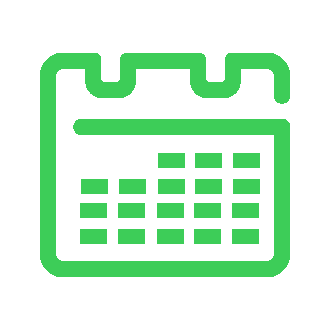 Date & TimeSchneider Electric | Main Series Sponsor
Date & TimeSchneider Electric | Main Series Sponsor
Date: 16 June 2022, Thursday
Time: 11:20am - 11:40am (BKK time) WhereIDC Arena Platform https://www.idc.com/ap/media-center/idc-arena
WhereIDC Arena Platform https://www.idc.com/ap/media-center/idc-arena+ Lifecycle Services From energy and sustainability consulting to optimizing the life cycle of your assets, we have services to meet your business needs. Schneider Electric
46 Rungrojthanakul Building. 1st, 10th, 11th Floor, Ratchadapisek Road. Huaykwang
Bangkok - 10310, Thailand
Phone +662 617 5500© 2022 Schneider Electric. All Rights Reserved. Schneider Electric is a trademark and the property of Schneider Electric SE, its subsidiaries and affiliated companies. All other trademarks are the property of their respective owners.
by "Schneider Electric" <reply@se.com> - 01:01 - 27 May 2022 -
The Great Resignation continues. Now’s the time to consider what workers need most.
McKinsey&Company
How employers can help .

Listen and learn In the news • Out of here. March saw 4.5 million US workers quit their jobs and 11.5 million positions open up—the highest numbers since December 2000, when the US Labor Department started tracking them. Overall, the number of jobs available is nearly twice the number of unemployed people. That means workers who still hold jobs—along with those who are seeking new ones—have better prospects than ever and fewer reasons to stay put. [FT] • Unhappy anniversary. As employers rethink workplace conventions, one stands out as especially vexed: the annual performance review. Study after study has revealed that yearly reviews show little, if anything, that’s useful about what workers excel (and struggle) at and what they like (and don’t like) to do—the very factors that determine whether they’re engaged at work or apt to leave. Worse, annual reviews reduce people to numerical ratings in a way that can make them question how much organizations value them. [WSJ] 
“Employee life is in no way comparable to serving in a combat zone. But the emotional reaction to returning from deployment does parallel what many workers are experiencing now.” 
On McKinsey.com • Tough times. After reading a McKinsey article proposing that many employers don’t know why their employees are leaving, a military veteran turned HR leader contacted one of the authors to offer a new perspective: “Employees don’t know why employees are leaving.” She likened the experience of adjusting to pandemic disruptions—working remotely, returning to work—to the experience of returning home from a military deployment: disorienting and disappointing because things aren’t the way they used to be. That’s a new feeling for many workers, she observed, so naturally, they’re having trouble. • Empathize and empower. For employers, the Great Resignation might seem like a business problem: How do we maintain an effective workforce? But it’s fundamentally a human problem that requires human solutions. People are grieving on multiple levels, and physical distancing and remote work have left them with fewer folks they can turn to. Acknowledging these difficulties is the first step toward helping people recover. Read on to understand what workers are feeling and how to best support them. — Edited by Josh Rosenfield Help people cope 
Was this forwarded to you? Sign up here. Or send us feedback — we’d love to hear from you. 

Follow our thinking 


This email contains information about McKinsey’s research, insights, services, or events. By opening our emails or clicking on links, you agree to our use of cookies and web tracking technology. For more information on how we use and protect your information, please review our privacy policy. You received this email because you subscribed to the On Point newsletter. Manage subscriptions | Unsubscribe Copyright © 2022 | McKinsey & Company, 3 World Trade Center, 175 Greenwich Street, New York, NY 10007
by "McKinsey On Point" <publishing@email.mckinsey.com> - 12:41 - 27 May 2022 -
The future of mobile wallets in Southeast Asia
the Daily read
Learn from a leader .
Share this email 



AN ARTICLE A DAY, PICKED BY OUR EDITORS 
Mobile-payment wallets are increasingly powerful—and popular—tools for consumers, particularly in regions like Southeast Asia. This convenient technology has broadened financial access there, with swift uptake during the pandemic. Beyond simply storing money, these wallets can be used to trade cryptocurrency, enable new payments methods, and more. A new article offers perspective from three leaders at the forefront of the field. “In Southeast Asia, more than six in ten people are unbanked, and only about 17 percent of transactions are cashless,” says Chris Yeo of Grab Financial Group. “So there are massive opportunities: we have to meet those needs, solve these problems.” Explore the potential and what the future could hold for digital wallets in the region. — Joyce Yoo, digital editor, New York 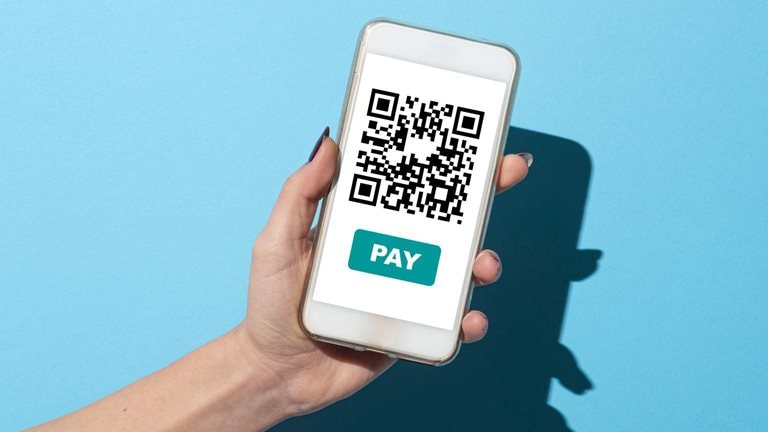
Mobile wallets: Southeast Asia’s new digital life hack Mobile-payment wallets have taken the Southeast Asian payments sector by storm, but where next for this groundbreaking technology? Three leaders in the field share their insights. Learn from a leader 

Quote of the Day “The bottom line is that growth and sustainability and inclusivity, there need not be trade-offs between them. They need not be antagonistic to each other.” —Ngozi Okonjo-Iweala, director-general of the World Trade Organization, in a recent episode of the McKinsey Global Institute’s Forward Thinking podcast 
Chart of the Day 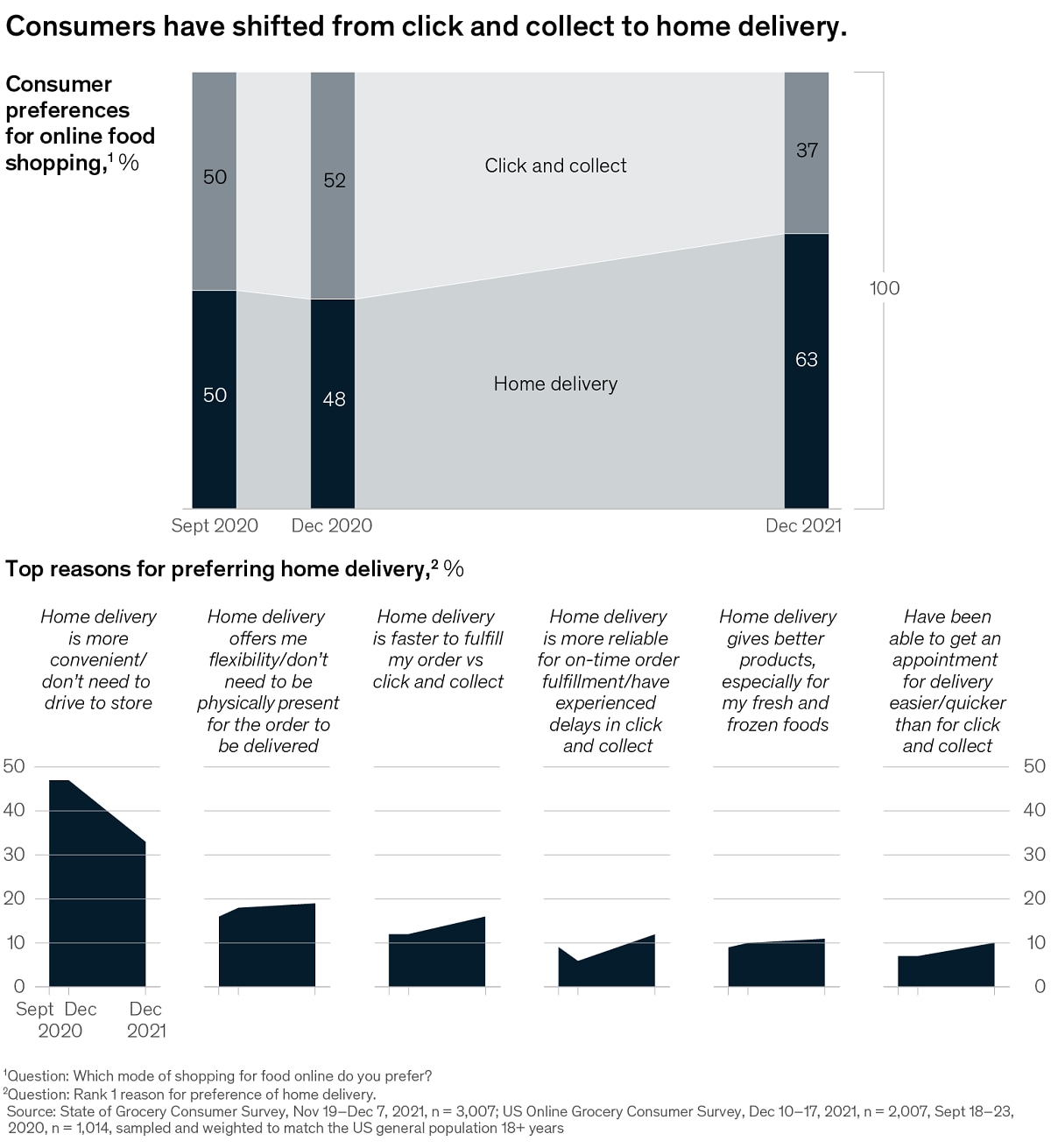
See today’s chart 
Also New 

Author Talks: Make anxiety your ally How can we reclaim our relationship with anxiety, so it works for, and not against, us? Develop a healthy mindset 


How economic-development organizations can seize funding opportunities By harnessing funds from the American Rescue Plan Act, economic-development organizations have an opportunity to effect significant change in their communities—if they can organize themselves first. Accelerate growth 


The tech transformation imperative in retail Organizations face an urgent need to overhaul their tech architecture and operating model to keep pace with the changing landscape. Five concrete actions can accelerate the transformation journey. Boost performance 


Follow our thinking 



Share these insights Did you enjoy this newsletter? Forward it to colleagues and friends so they can subscribe too.
Was this issue forwarded to you? Sign up for it and sample our 40+ other free email subscriptions here.This email contains information about McKinsey’s research, insights, services, or events. By opening our emails or clicking on links, you agree to our use of cookies and web tracking technology. For more information on how we use and protect your information, please review our privacy policy. You received this email because you subscribed to the Daily Read newsletter. Manage subscriptions | Unsubscribe Copyright © 2022 | McKinsey & Company, 3 World Trade Center, 175 Greenwich Street, New York, NY 10007
by "McKinsey Daily Read" <publishing@email.mckinsey.com> - 06:29 - 26 May 2022 -
[May Update] Exciting stories and essential reading from Remote!
[May Update] Exciting stories and essential reading from Remote!
We’re back with the latest from the blog, introducing some new partners, and sharing webinars and upcoming events that you should know about.Hi MD,
Welcome to your May update from Remote! We're back with news on what's new with us, the latest from the blog, plus some new partners, webinars, and upcoming events you should know about. Read on for the scoop.
Introducing new Remote Marketplace Partners you can trust.
We’re excited to add Notion, Fonoa, Goodtime.io, and TravelPerk to our exclusive list of partners focused on helping their customers grow global teams. Even better, Remote customers can get special offers on their products and services.
Remote Recruiting and Sourcing Referral Program
We’re thrilled to add Wave, TecPartners, and Martinsen Mayer to our list of recruiting and sourcing referral program partners. Just one more way we’re helping our customers who want to hire in the United Kingdom and Ireland.
Take the stress out of your move with Shyft
Moving homes doesn’t have to be complicated. But you do need to make sure you don’t leave anything behind. Our partner Shyft created a Moving Checklist that you or any of your employees can keep handy, pin up on your fridge, and leverage to make your move smooth.
best from the blog
Solving complex problems with the Remote API
Find out how we're working with some of the world's leading HR and payroll partners to create seamless workflows that solve employers' biggest problems when it comes to scaling globally.
upcoming events
Viva Tech, Paris
Date: June 15-18 2022
Every year VivaTech brings together, in Paris and online, business leaders, startups, investors, researchers, and innovators to ignite positive change in business and for society. Meet Remote at our booth #L12.
re:Publica, Berlin
Date: June 8-10 2022
The re:publica Berlin is a festival for digital society and the largest conference of its kind in Europe. Here, bloggers meet politicians, scientists meet entrepreneurs, and artists meet activists to discuss current issues. Meet Remote at re:publica at our booth #e04 or visit The Remote Lounge. To schedule a meeting with a member of the Remote team, follow the link below.
on-demand webinar
On-demand webinar: Building a globally inclusive recruitment strategy
You can now watch the recording of our latest webinar! Join experts from four of the world's leading HR companies as they share their wisdom on building effective, empowering global recruitment strategies with inclusivity at the center.
You received this email because you are subscribed to News & Offers from Remote Technology, Inc.
Update your email preferences to choose the types of emails you receive.
Unsubscribe from all future emailsRemote Technology, Inc.
Copyright © 2022 Remote Technology, Inc. All rights reserved.
18 Bartol St. #1163 San Francisco California
by "Remote" <hello@remote-comms.com> - 12:00 - 26 May 2022 -
Business value of observability, this month's free online training, and more
New Relic
Your weekly scoop on the latest New Relic product innovations, partnerships, and events.New report: Business value of New Relic observability platform
This research from IDC explores the value and benefits of using New Relic based on in-depth customer interviews and the IDC methodology for determining business value. Learn about:
- Improved application monitoring and development
- Business improvements
- ROI summary.
Learn moreRegister for online workshops and get a link to the recording and course notes after the event. Upcoming webinars include:
- Alerts fundamentals ( 7 June)- New Relic platform fundamentals (15 & 16 June)As regulatory safeguards are built into the European open banking ecosystem, New Relic's Alex Clarkson describes how authentication is being used to increase customer consent. Learn about best practices to enable data sharing and what to measure in customer consent workflows[Watch] Resolve errors faster with full-stack error tracking
Watch this on demand demo to learn how to use errors inbox, workloads, CodeStream, and New Relic’s Jira integration to help prioritise, organise, and resolve errors, and improve the reliability of your system with each sprint cycle.
Watch nowDiginomica covered the release of New Relic functionality that helps software engineers set service level indicators and objectives to improve site reliability and uptime.
Read nowBASF's Head of IT Solutions Delivery Europe explains how building a central interface on New Relic was key to seeing the health of all applications in one overview and communicate business KPIs to stakeholders.Would you like to see more of what New Relic can do for you? Request a demo > View in browser
This email was sent to info@learn.odoo.com
Unsubscribe or Change Your Email Address and preferences at any time.
For information about our privacy practices, see our Privacy Policy.
New Relic, Inc. 31-36 Golden Ln, Dublin 8, D08 A5RV, Ireland | +353 (01) 687 6808
© 2022 New Relic, Inc. All rights reserved.
New Relic logo are trademarks of New Relic, Inc.
by "New Relic" <emeamarketing@newrelic.com> - 04:06 - 26 May 2022 -
What are working parents’ biggest childcare concerns? See our recent research.
McKinsey&Company
Five pain points that parents face .

Childcare challenges In the news • The first three years. Around 85% of the human brain is formed in the first three years of life. Yet the US is failing to give children, families, and caregivers the support that they need during those crucial early years, says pediatric surgeon and author Dr. Dana Suskind in a new book, Parent Nation: Unlocking Every Child’s Potential, Fulfilling Society’s Promise. On average, an OECD nation invests roughly $14,000 each year caring for a toddler. The US, meanwhile, spends approximately $500 per toddler. [NPR] • Signs of burnout. Two-thirds of working parents in the US are burned out, reveals a new report. Parents are so exhausted that many feel like they’re running on empty. To recognize parental burnout, look for red flags, such as fatigue, changes in sleep and appetite, and feelings of anger or resentment, says one psychiatrist. Burned out parents might also daydream about leaving their home life behind. Frazzled parents—those suffering from mild or moderate burnout—can fight off more serious exhaustion by asking for help, practicing self-compassion, and taking breaks. [NYT] 
Around 40% of surveyed parents who were thinking about moving to a less-demanding job said they might reconsider if their current company offered on-site childcare. 
On McKinsey.com • Why parents walk away from work. In the US, working parents have long struggled to find high-quality, affordable childcare, but the past two years have only intensified that challenge. Recent McKinsey research shows that 45% of moms with the youngest kids who dropped out of the workforce during the COVID-19 pandemic said that childcare was a major reason. Many parents are experienced employees who support their coworkers’ health and well-being. When they leave, organizations lose their expertise, institutional knowledge, and managerial skills. • How to keep them. The good news is that companies that offer help with childcare can attract and retain more workers. Around 50% of respondents said the top reason they would choose one job over another is having the ability to work flexibly, reveals a McKinsey survey of more than 2,000 working parents. Those with preschool-aged children overwhelmingly said that childcare benefits would be a big factor in their decision to stay with a company. Understand five pain points that working parents face in securing childcare, along with how companies can help. — Edited by Belinda Yu Support working families 
Was this forwarded to you? Sign up here. Or send us feedback — we’d love to hear from you. 

Follow our thinking 


This email contains information about McKinsey’s research, insights, services, or events. By opening our emails or clicking on links, you agree to our use of cookies and web tracking technology. For more information on how we use and protect your information, please review our privacy policy. You received this email because you subscribed to the On Point newsletter. Manage subscriptions | Unsubscribe Copyright © 2022 | McKinsey & Company, 3 World Trade Center, 175 Greenwich Street, New York, NY 10007
by "McKinsey On Point" <publishing@email.mckinsey.com> - 12:20 - 26 May 2022 -
Workplace real estate in the COVID-19 era: From cost center to competitive advantage
the Daily read
3 steps for transformation .
Share this email 



AN ARTICLE A DAY, PICKED BY OUR EDITORS 
Companies have long thought of their physical workplaces as just one of the costs of doing business. But the new world of work demands a different approach to workplace real estate: offices should be strategically located, built for purpose, and integrated into corporate strategies. Real estate should be approached as part of a company’s larger goals and guided by CEOs and executive teams. Check out a new article to see how three companies have successfully used their physical footprint as a competitive edge, and explore three steps companies can take to transition their real estate from a cost center to an integral part of the corporate strategy. — Joyce Yoo, digital editor, New York 
Workplace real estate in the COVID-19 era: From cost center to competitive advantage Companies today should build workplaces that help them realize their strategies. Here’s why and how. 3 steps for transformation 

Quote of the Day “Sustainability is too important to leave to our chief sustainability officer. It needs to be owned by everybody in the management committee if we’re going to be effective.” —Michael Froman, vice chairman and the president of strategic growth at Mastercard, on integrating ESG [environmental, social, and governance] into business strategy in a new episode of the Future of America podcast 
Chart of the Day See today’s chart 
Also New 

Forward Thinking on trade, vaccines, and sustainable and inclusive growth with WTO Director-General Ngozi Okonjo-Iweala The World Trade Organization’s first African—and first female—director-general reflects on the impact of the pandemic on trade, the imperative to ensure that vaccines reach Africa and other emerging economies, and how to ensure that trade is more inclusive in the years ahead. Address challenges 


Financial inclusion and sustainable, inclusive growth in action Access to financial services remains a significant barrier to prosperity for millions of Americans. How can businesses promote financial inclusion and support sustainable, inclusive growth more broadly? Understand the issues 


Sustainability in semiconductor operations: Toward net-zero production As semiconductor companies ramp up production to meet surging demand, greenhouse-gas reduction deserves equal emphasis. Make green changes 


Follow our thinking 



Share these insights Did you enjoy this newsletter? Forward it to colleagues and friends so they can subscribe too.
Was this issue forwarded to you? Sign up for it and sample our 40+ other free email subscriptions here.This email contains information about McKinsey’s research, insights, services, or events. By opening our emails or clicking on links, you agree to our use of cookies and web tracking technology. For more information on how we use and protect your information, please review our privacy policy. You received this email because you subscribed to the Daily Read newsletter. Manage subscriptions | Unsubscribe Copyright © 2022 | McKinsey & Company, 3 World Trade Center, 175 Greenwich Street, New York, NY 10007
by "McKinsey Daily Read" <publishing@email.mckinsey.com> - 06:46 - 25 May 2022 -
Reimagine your supply chain
Re:think
Supply chain innovation In the past few years, companies across sectors have struggled with supply chain challenges. One of the most counterintuitive approaches I have seen comes from an apparel retailer, whose solution is to turn competitors into collaborators and customers.
Most brick-and-mortar retailers are still catching up with the massive shift to e-commerce, which has accelerated during the COVID-19 pandemic and may well account for a third of all retail sales by 2030. When you’ve built an extensive network of stores, shifting to a business model in which you receive half of your sales from an online channel is a structural challenge. Suddenly, the old approach—all of your inventory was landlocked in a distribution center in the middle of the country—doesn’t make operational sense.
Many retail chains started dealing with this problem a few years ago by shifting significant inventory to their stores, in effect turning them into mini e-commerce order fulfillment centers. This model works when orders contain only one item, and that item is close to the person who made the purchase. In most retail operations, the cost to pack a single item during downtime is seen as acceptable. But most retailers have learned that orders typically contain two or three items (or more) that usually aren’t available in the same location. The cost of paying multiple salespeople to pick and pack an order—as well as the added shipping costs for that multiitem order—adds up quickly. Making matters worse, forward-deploying inventory to hundreds or thousands of locations made it harder for retailers to keep up with unpredictable customer demand, which is something of the norm in fashion.“Most brick-and-mortar retailers are still catching up with the massive shift to e-commerce.”
This apparel retailer decided it could do better by restructuring its supply chain. It opened more than a half-dozen smaller fulfillment centers around the country. Even accounting for changes in fashion, these small centers had virtually all the inventory that the retailer’s stores and online customers needed and could deliver it in a hurry. The centers were located in areas of lower-cost real estate. Those regions had a more flexible labor market, and the centers could deliver inventory to stores or online orders as needed. By replicating a model more common in fast-moving, highly predictable consumer goods, this retailer reduced online order costs by 15% per order. That’s just one of the benefits. The company also slashed working capital by pulling seven weeks of inventory from stores and selling more goods at full price, since it didn’t have to mark down items stranded in stores.
This is where the story takes an interesting twist. Once the retailer saw how well its new supply chain network was working, it realized that it had landed on a possible new business. Nearly all of its competitors faced the same problem and a future of supply chain costs accelerating faster than revenues. Why couldn’t the retailer apply its new expertise to a cooperative model providing scale benefits and inventory balancing that only the largest big-box retailers can achieve? The math suggested that the retailer would need 250 businesses of its own size to match the scale economies of the larger multicategory retailers. Could it further evolve the model with technology, robotics, and analytics to offer “supply chain as a service” to its competitors?
It’s early days still, but the answer seems to be yes. This retailer bought two online logistics companies that had helped it establish the network and found ways to aggregate orders from different businesses to save parcel costs. The net result is $1 in savings per order, which is meaningful for midmarket retailers. It’s a “frenemy” strategy that encourages and creates incentives for open-source collaboration among competitors.
By now, so many of us take online ordering and speedy delivery for granted. But I believe their continued acceleration will roil the retail industry for a long time to come, even when COVID-19 is a distant memory. In our research, this is one of the top issues facing retail executives today. Creative retailers like this one are finding ways to turn a fixed-cost, high-capital challenge into a technology-based growth opportunity. Pretty novel.ABOUT THE AUTHOR
Jennifer Spaulding Schmidt is a senior partner in McKinsey’s Minneapolis office.
MORE FROM THIS AUTHOR

Digitally native brands: Born digital, but ready to take on the world
By applying the right criteria, investors can identify digitally native brands with the potential to outperform.

Patterns for value creation in apparel, fashion, and luxury
Performance in the fashion and luxury industries has turned lower, but leading companies haven’t been deterred. Here’s how they excel.
IN TWO WEEKSAlastair Green on sustainable real estate
Here’s how companies can make real estate—a prime contributor to the buildup of greenhouse gases—part of their decarbonization efforts.
This email contains information about McKinsey’s research, insights, services, or events. By opening our emails or clicking on links, you agree to our use of cookies and web tracking technology. For more information on how we use and protect your information, please review our privacy policy.
You received this email because you subscribed to our McKinsey Quarterly alert list.
Copyright © 2022 | McKinsey & Company, 3 World Trade Center, 175 Greenwich Street, New York, NY 10007
by "McKinsey Quarterly" <publishing@email.mckinsey.com> - 04:09 - 25 May 2022









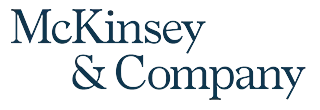
.png?width=1200&upscale=true&name=Group%201%20(6).png)














